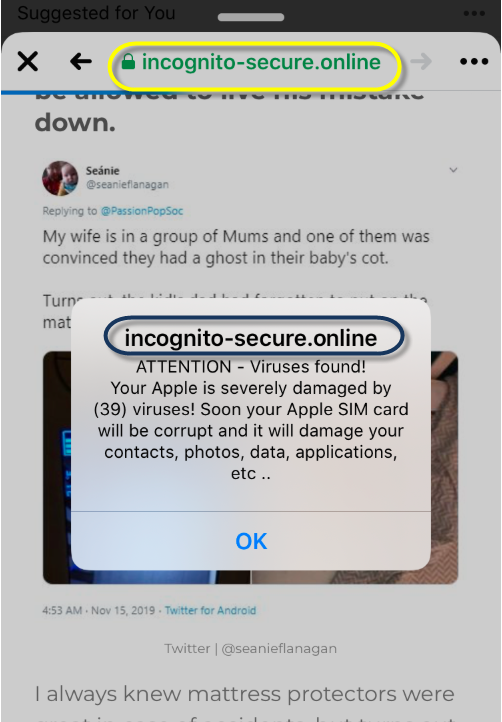Incognito Secure Online
Incognito Secure Online is an iPhone application that will bring unwanted ads to your device’s screen and force it to spam you with sudden page redirects. Incognito Secure Online shouldn’t be kept on the device because it may potentially cause exposure to more dangerous software threats.

Even though it is far more common to encounter such an app on an Android phone or a Windows computer, there are plenty of browser-hijacking apps for Macs and iPhones. Case in point, Incognito Secure Online is one of the newest browser hijackers developed specifically for iPhone devices. The goal of this rogue software is simple: to advertise different sites and the products offered by them directly on your screen through aggressive pop-ups, page redirects, banners, and other obstructive forms of advertisements. The page redirects caused by this app could happen in any browser and not only in Safari. For instance, even if you prefer to use Chrome or Firefox, Incognito Secure Online could still affect their behavior and cause them to flood your screen with redirects to sites that you don’t want to be visiting.
The main problem with the presence of this unwanted browser hijacker on your iPhone is that the uncontrolled ads could eventually lead to encounters with more dangerous threats such as viruses, Trojans, or Ransomware. It’s just not safe to have an app that constantly spams your screen with questionable advertisements and you should do everything you can to remove Incognito Secure Online. If you cannot remove the app on your own, then try using the removal guide below. It will help you get rid of the hijacker and prevent any potential exposure to viruses and other hazardous forms of malware.
SUMMARY:
| Name | Incognito Secure Online |
| Type | Browser Hijacker |
Incognito Secure Online Removal
You are dealing with a browser hijacker that can restore itself. We are sending you to another page with a removal guide that gets regularly updated. It covers in-depth instructions on how to:
1. Locate and clean up your phone’s calendar events if they are infected.
2. Find browser extensions related to the threat and how to remove them.
3. Ensure your passwords were not stolen or tampered with.
You can find the removal guide here.

Leave a Reply